Women and Men in Caraga
(Based on the latest gender statistics as of February 2024)
VITAL STATISTICS
More male births registered than female
In 2022, a total of 39,986 live births were registered in the region. Of the total, more males (20,865 or 52.2 percent) were registered than females (19,121 or 47.8 percent). This resulted in a sex ratio at birth of 109 males per 100 females.
Among the provinces in the region, the province of Agusan del Sur recorded the highest number of registered live births with 5,820 males and 5,198 females, followed by Surigao del Sur with 5,456 males and 5,034 females. The province of Dinagat Islands had the least number of registered live births with 677 males and 626 females. (Figure 1 and Table 1)
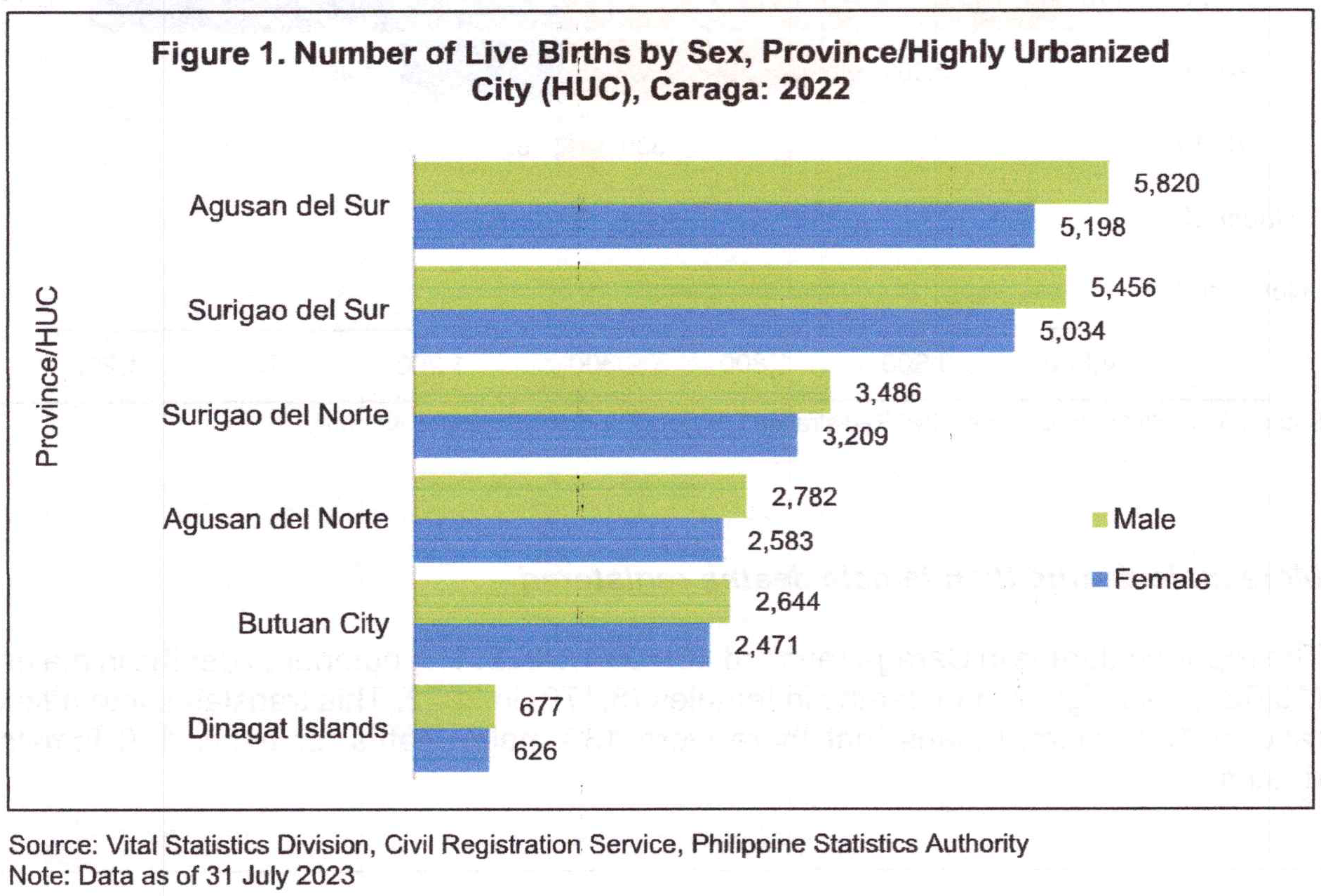
Higher number of males and females in Caraga married between ages 25-29 years old
The number of marriages in Caraga reached 12,603 in 2022. Among age groups, highest number of males and females married between ages 25 to 29 years old. Of which, males comprised 34.7 percent while 37.4 percent was recorded for its female counterpart. (Figure 2 and Table 2)
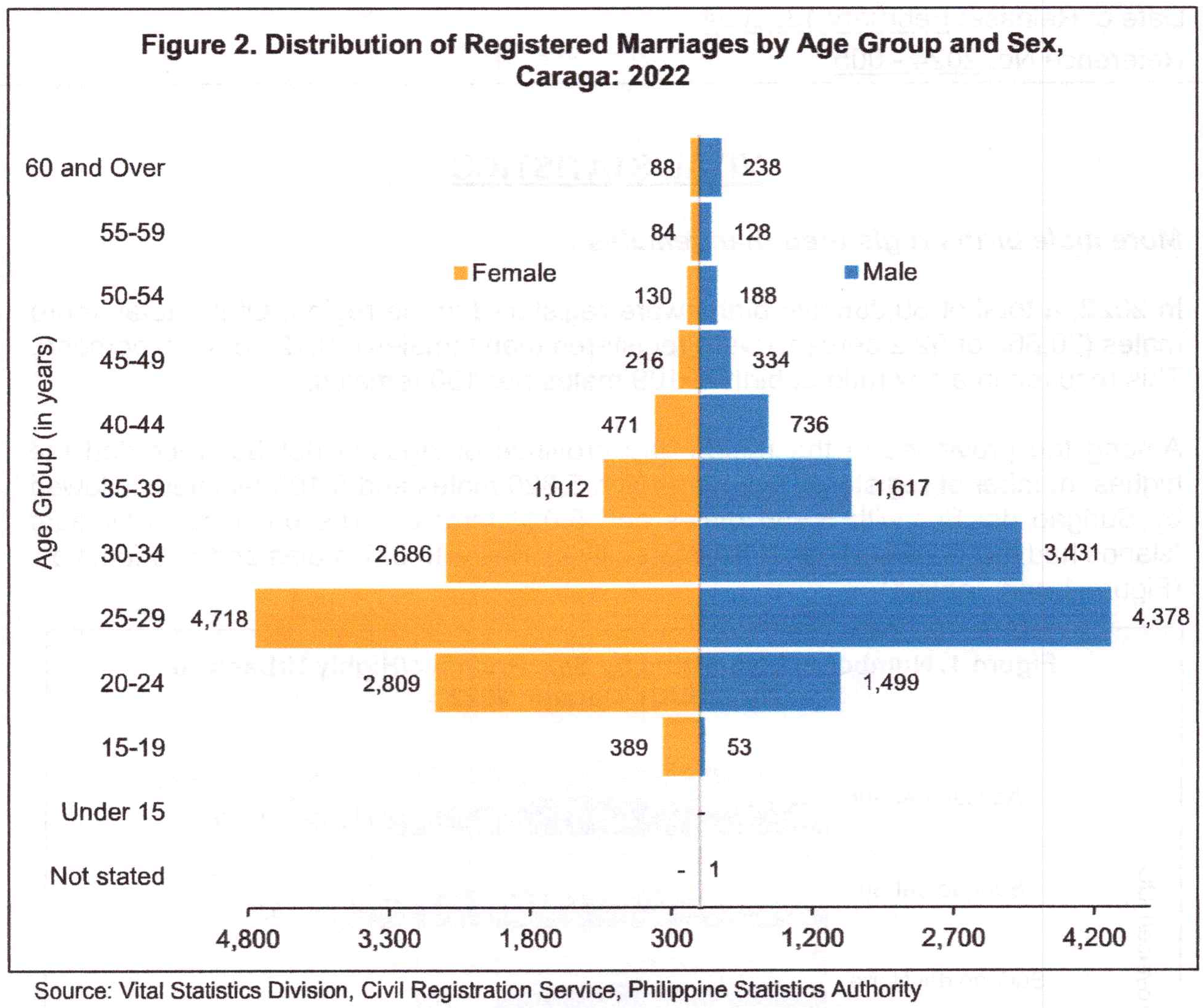
More male deaths than female deaths registered
The reported deaths in Caraga reached 18,793 in 2022. The number of deaths in males (10,623) was higher than deaths in females (8,170) in 2022. This translates into a sex ratio of 130, which means that there were 130 male deaths for every 100 female deaths.
The top two provinces in the region in terms of the number of deaths were Surigao del Sur with 4,774 or 25.4 percent of the total number of deaths, and Agusan del Sur with 4,144 or 22.1 percent. On the other hand, Dinagat Islands recorded the least number of deaths with 801 or 4.3 percent of the total number of deaths in 2022. (Figure 3 and Table 3)
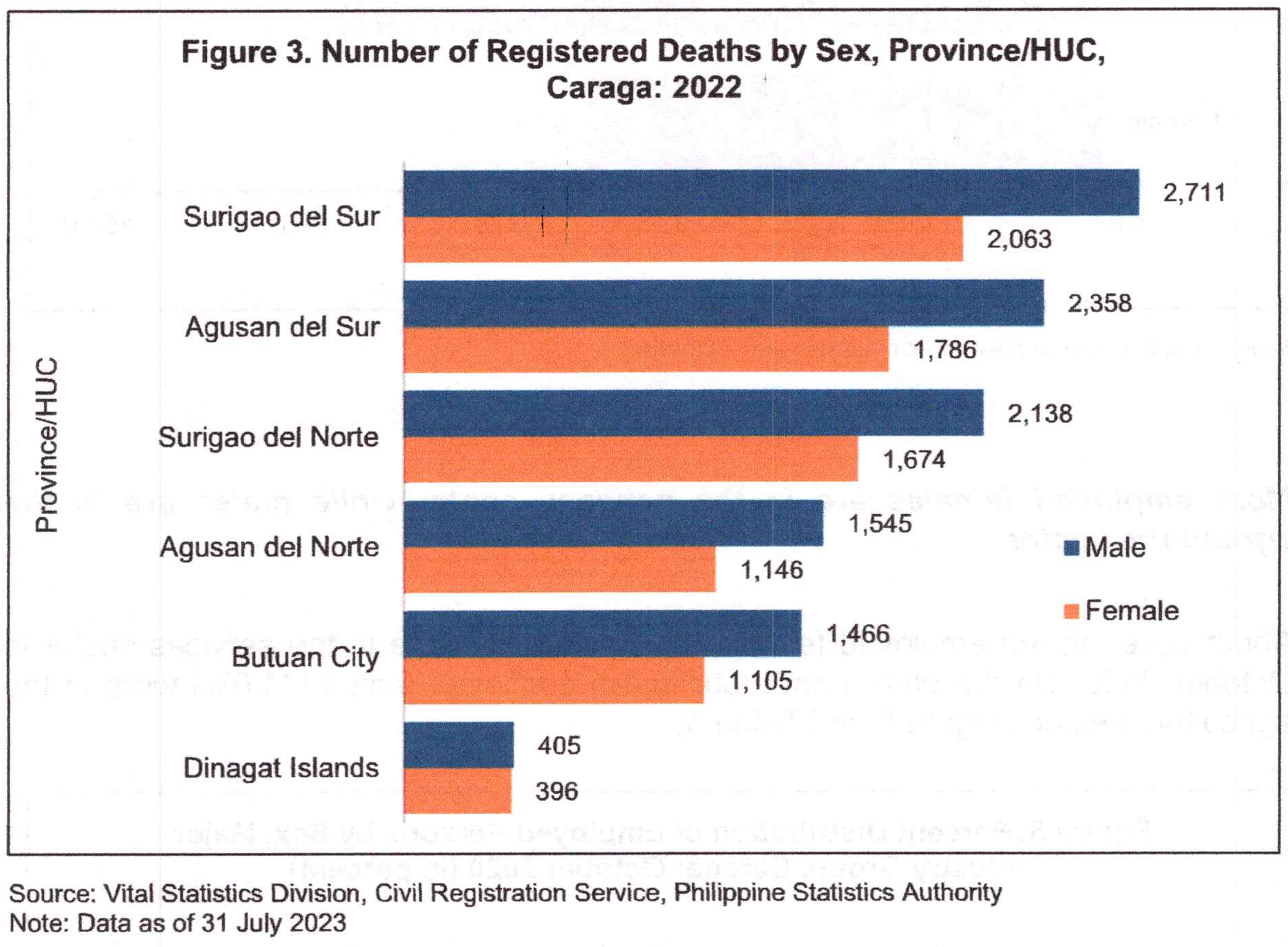
WORK
Females are less likely to participate in the labor force than males
Less than half (38.7%) of all females in the region age 15 years and over were either employed or unemployed in October 2020. This means that about one in two (51.1%) females age 15 years and over were in the labor force. This was lower compared with the males' labor force participation rate of 75.7 percent, which means that around three in four males age 15 years and over were either employed or unemployed. (Figure 4 and Table 4)
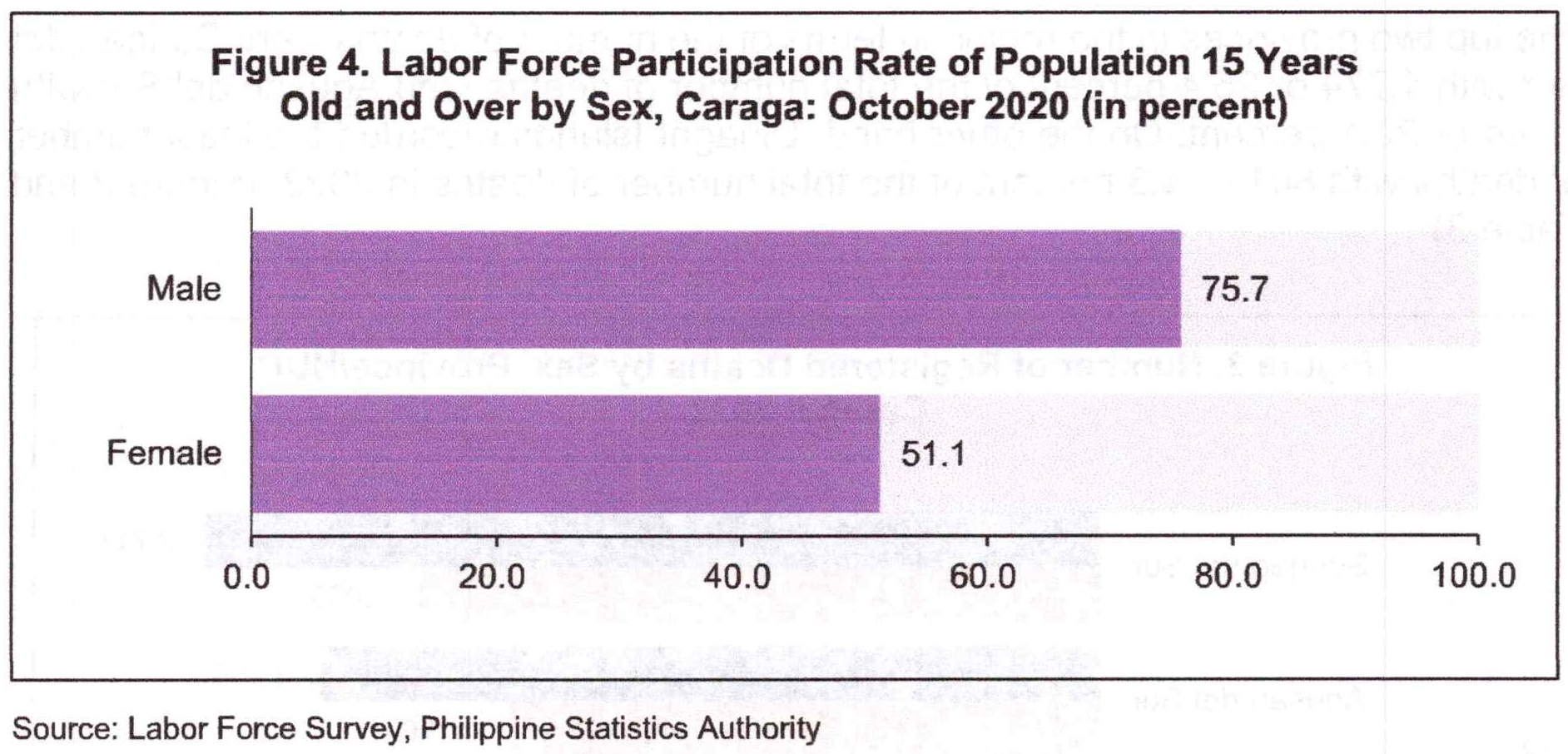
More employed females are in the services sector while males are in the agriculture sector
About seven in ten employed females (70.6 percent) were in the services sector in October 2020. On the other hand, four in ten employed males (44.0%) were in the agriculture sector. (Figure 5 and Table 5)
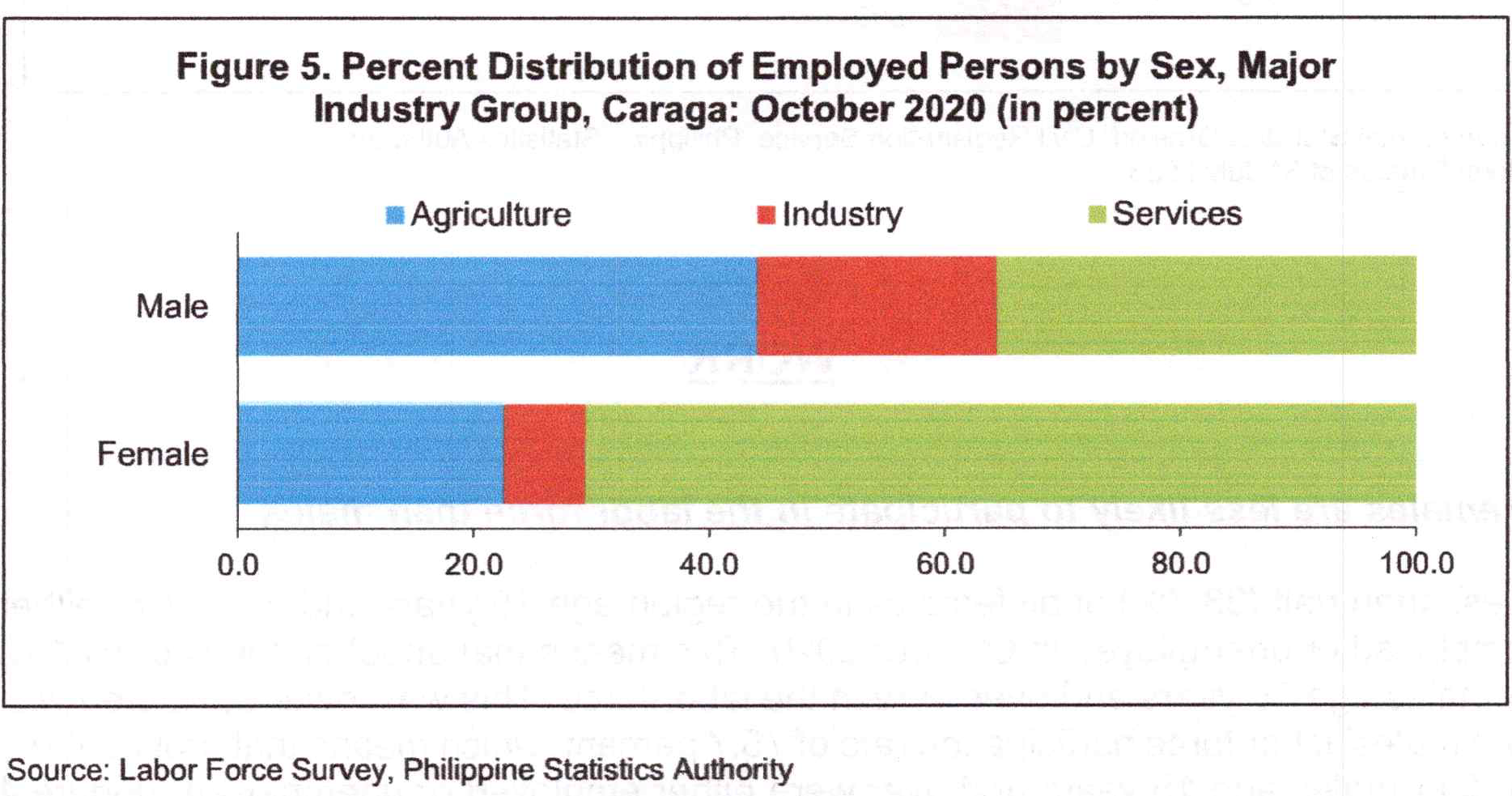
More female job applicants than male
In 2022, there were more female job applicants (25,713) compared to male job applicants (20,771) in the Public Employment Service Office of the Department of Labor and Employment (DOLE) in the region. Among the provinces, Agusan del Sur posted the highest number of job applicants. (Figure 6 and Table 6)

EDUCATION
Higher number of male enrollees than female enrollees
For the school year 2021 - 2022, a total of 791,202 enrollees were recorded in all levels of education (pre-school, elementary, and secondary). Of this total, male enrollees accounted for 51.1 percent (404,055) while female enrollees comprised 48.9 percent (387,147).
It can be observed that male enrollees in the· pre-school and elementary levels of education were greater in number, as compared to the female enrollees. On the other hand, there were more female enrollees (177,591) in secondary education than the male enrollees (176,826). (Figure 7 and Table 7)
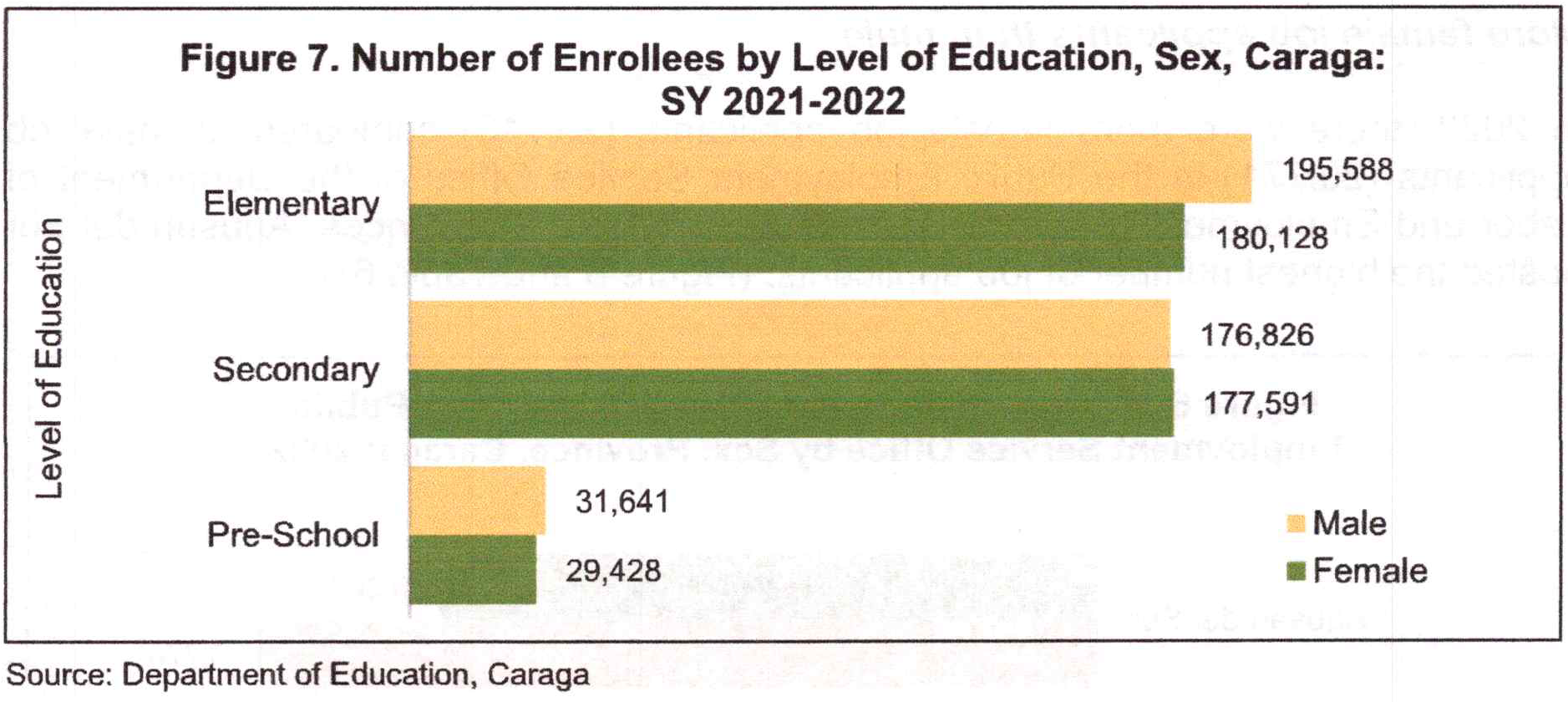
More female tertiary graduates than males in all provinces
For the school year 2021-2022, there was a total of 14,946 graduates in the region. Of this figure, there were 9,036 female graduates which was higher by 3,126 than male graduates (5,910).
Among the provinces, Agusan del Norte had the highest number of tertiary graduates for the school year 2021-2022, followed by Surigao del Norte, both of which had more female graduates compared with that of male graduates. (Figure 8 and Table 8)
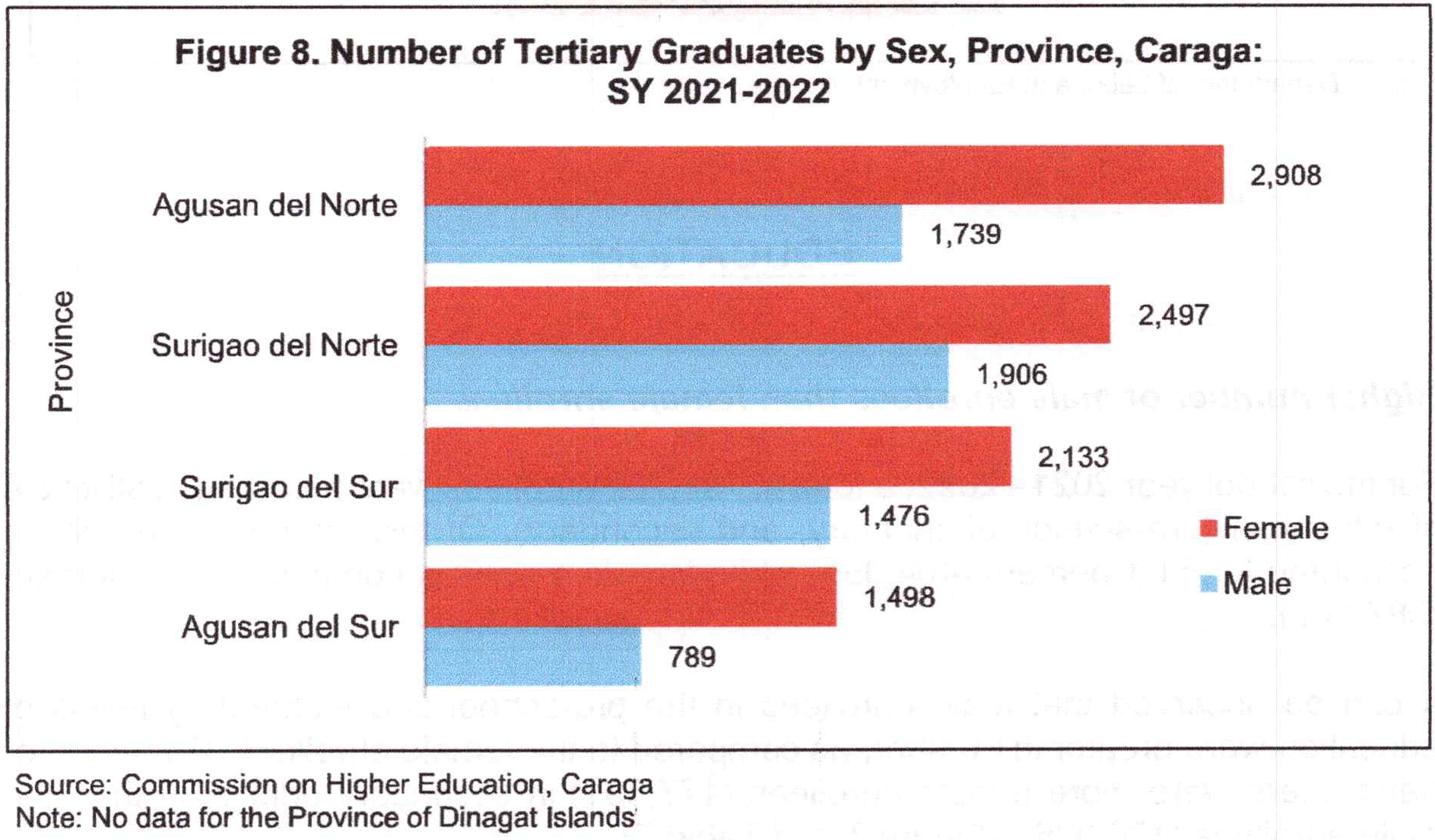
SOCIAL WELFARE
More than half of the SLP beneficiaries are females
There were 12,501 beneficiaries of the Sustainable Livelihood Program (SLP) of the Department of Social Welfare and Development (DSWD) in 2022 in the region. Of this figure, 8,410 (67.3 percent) were females while 4,091 (32.7 percent) were males.
Among the provinces in the region, Surigao del Sur had the greatest number of beneficiaries, followed by Surigao del Norte with 4,611 beneficiaries and 3,181 beneficiaries, respectively. (Figure 9 and Table 9)
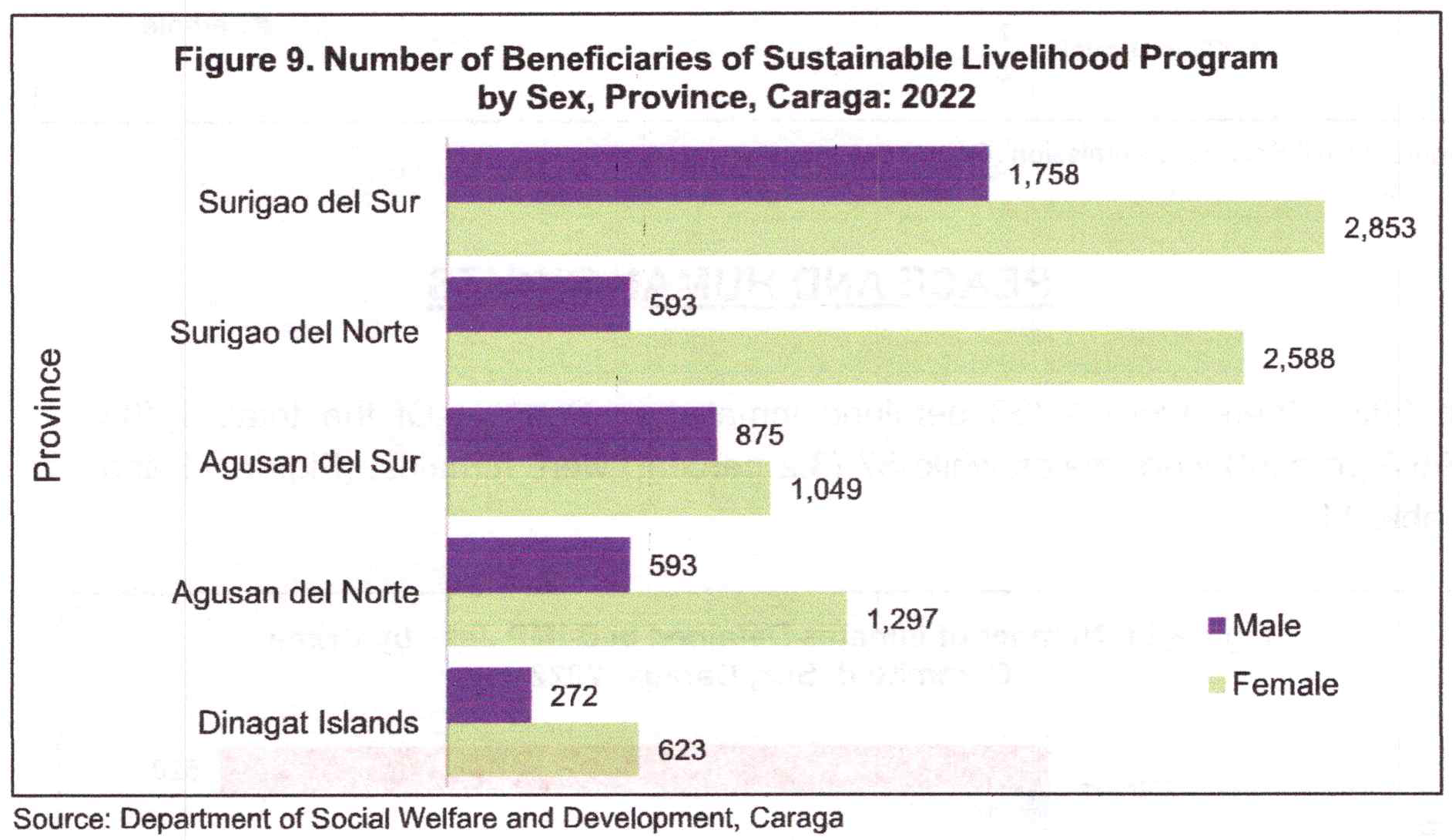
PUBLIC LIFE
More than half of the government personnel are males
In 2022, a total of 111,884 government personnel were recorded in Caraga. Of this, 48.8 percent (54,572) were females while 51.2 percent (57,312) were males.
Of the total number of government employees, 60.7 percent (67,892) were holding career positions (first level, second leyel, and third level). The remaining 39.3 percent (43,992) were Job Orders, Contract of Service (COS), and Non-Career employees. (Figure 10 and Table 10
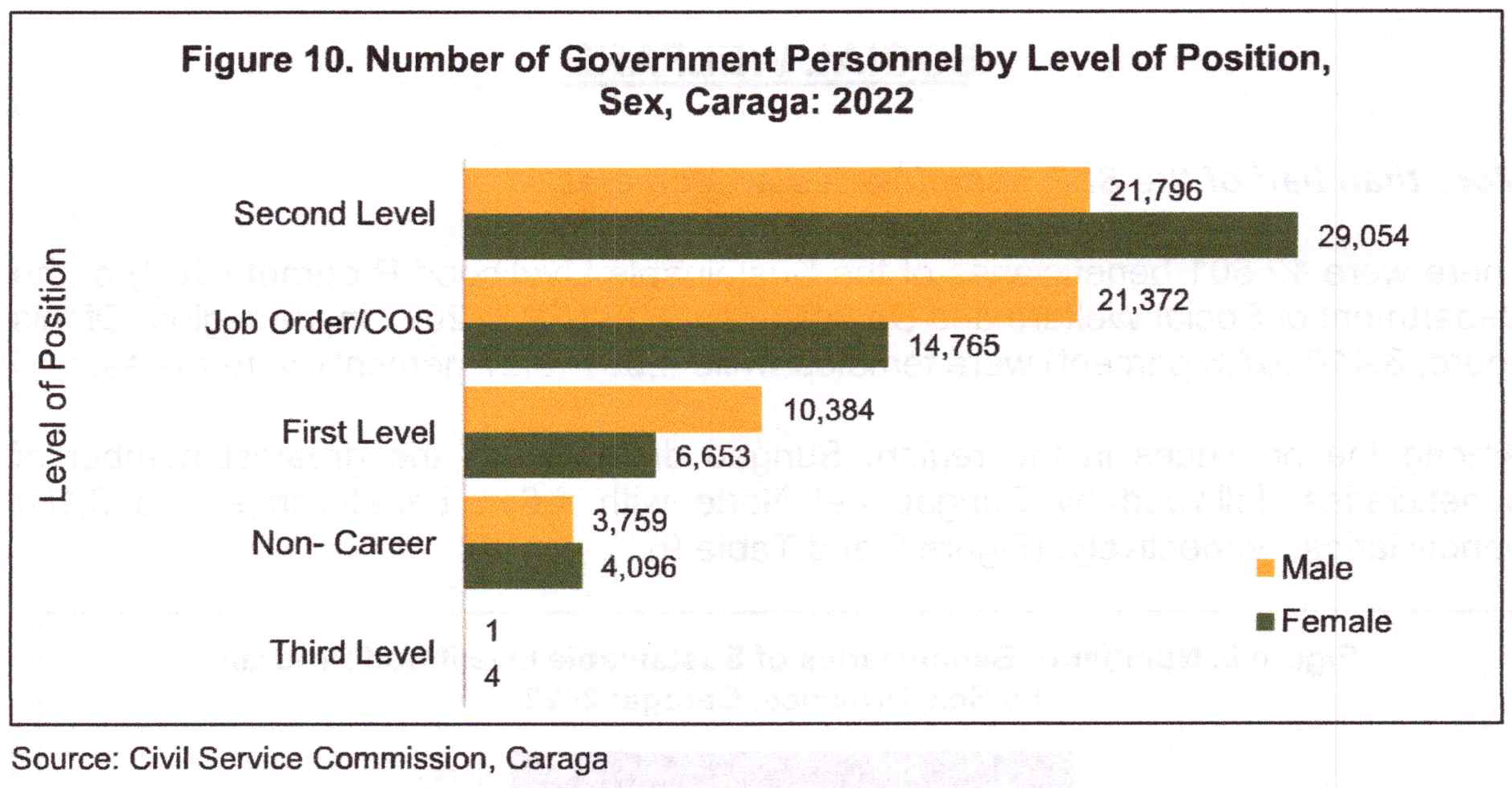
PEACE AND HUMAN RIGHTS
In 2022, there were 1,763 detained inmates in Caraga. Of the total, 1,706 (96.8 percent) were males while 57 (3.2 percent) were females. (Figure 11 and Table 11)
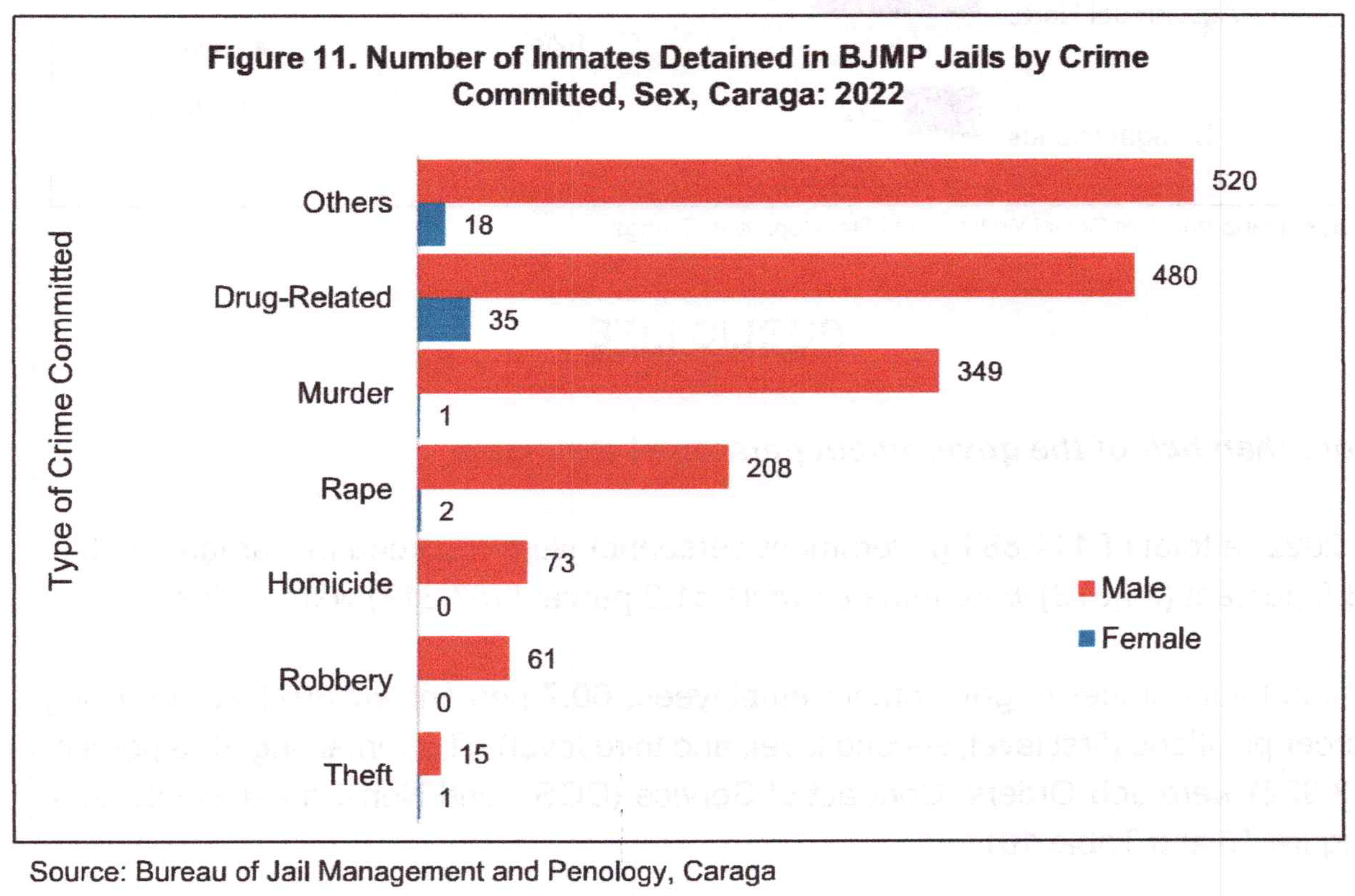

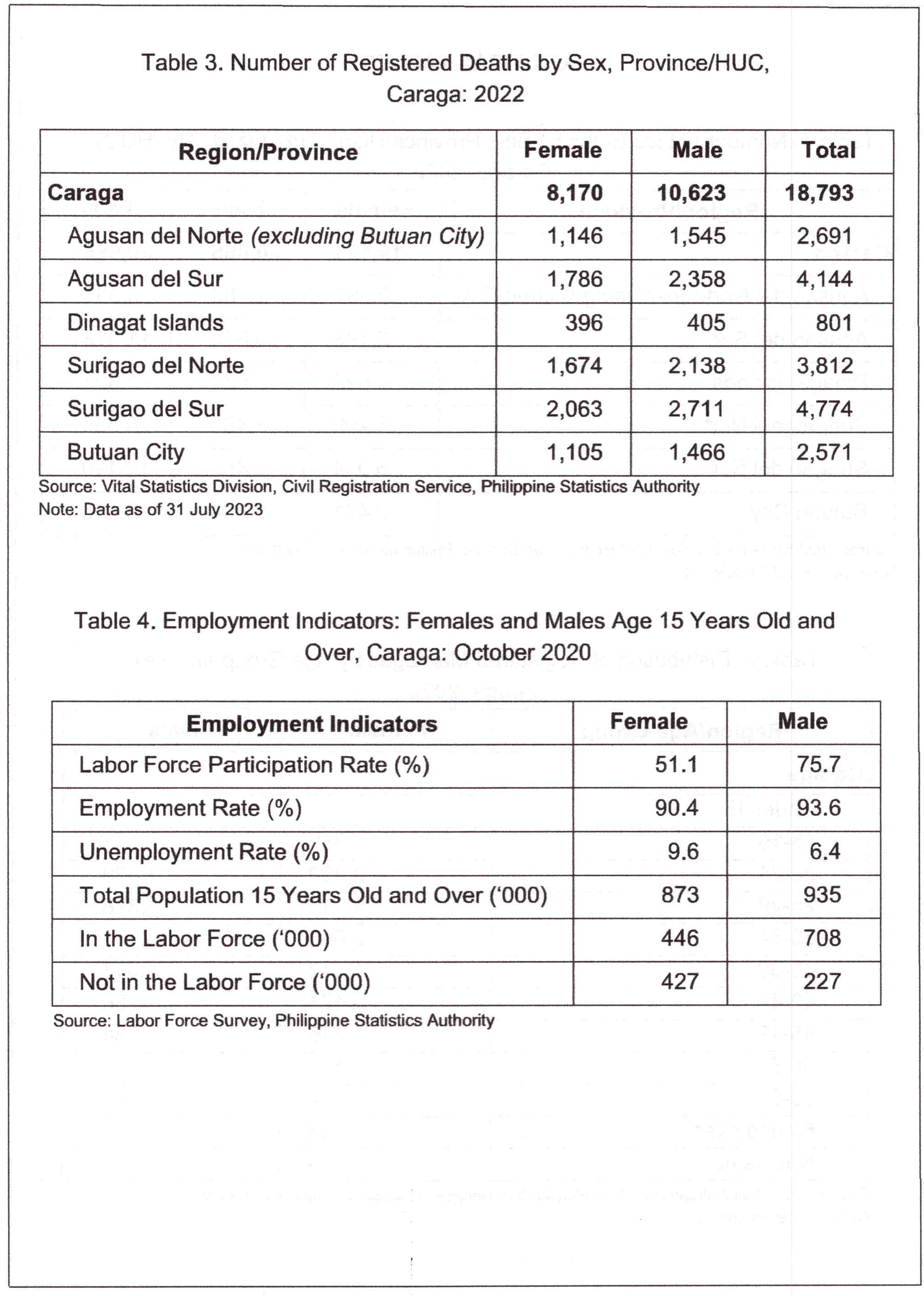



TECHNICAL NOTES
Definition of Terms
Live Birth - a complete expulsion or extraction from its mother of a product of conception, irrespective of the duration of the pregnancy, which after such separation, breathes or shows any other evidence of life, such as beating of the heart, pulsation of the umbilical cord, or definite movement of voluntary muscles, whether or not the umbilical cord has been cut or the placenta is attached; each product of such a birth is considered liveborn.
Death - refers to the permanent disappearance of all evidence of life at any time after live birth has taken place (postnatal cessation of vital function without the capability of resuscitation).
Sex Ratio - the ratio between males and females in a population expressed in number of males per 100 females.
Employed - include all persons 15 years old and over as of their last birthday and during the basic survey reference period are reported as either: a) At work. Those who do any work even for one hour during the reference period for pay or profit, or work without pay on the farm or business enterprise operated by a member of the same household related by blood, marriage, or adoption; OR b) With a job but not at work. Those who have a job or business but are not at work because of temporary illness/injury, vacation, or other reasons. Likewise, persons who expect to report for work or to start operation of a farm or business enterprise within two weeks from the date of the enumerator's visit, are considered employed.
Labor Force (Persons in the Labor Force) - the population 15 years old and over whether employed or unemployed who contribute to the production of goods and services in the country.
Labor Force Participation Rate - proportion in percent of the total number of persons in the labor force to the total population 15 years old and over.
Approved by:
(Sgd.) ROSALINDA C. APURA, D.M.)
Regional Director PSA-RSSO-XIII
Telephone number: (085) 225-5219 /Telefax No.: (085) 815-4935 Email address: rssocaraga@psa.gov.ph

